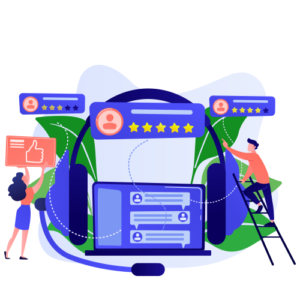Every business needs to manage its workforce effectively to save time, money, and effort. In the contemporary world, workforce management has become easier than it used to be. It is because of workforce management systems. These workforce management system features help 88% of organizations manage their workforce effectively and efficiently.
There are a lot of programs out there that make it challenging to choose one. Many people prefer simple workforce management tools over complex workforce management programs.
This one is not good because it does not have all the features within the list of workforce management software. We have made a list of the crucial things to focus on whenever feature bloat happens in a payroll provider or solutions like accounting software.
How to Avoid the Feature Bloat in Workforce Management System
It can be difficult to determine which features to include in creating the best workforce management software and which features to eliminate. If you don’t draw that line early and often, you’ll end up with the most dreadful term for effect: feature bloat.
Studies show how every team needs to watch a potential problem known as feature creep or feature fatigue, which occurs when too many features are in an application—customer churn, overly complex products, and unforeseen technical debt can result.
But here are the things you should remember before choosing what features to use in your system:
- When trying to figure out a problem, always start with “what” and “why.”
- Your team can identify opportunities by using a product problem template.
- You can avoid bias if you focus on feedback rather than taking action.
- Consider your goals when prioritizing tasks on your roadmap.
- Usability is more critical than eye-catching designs.
Crucial Things To Remember During a Feature Bloat
When feature bloat happens, the first thing to do is think about how much you will require money and effort throughout a product’s lifespan. Do you have any idea how much it will cost to make future updates or fix problems? There is no way to know how much it will cost to develop and implement new features when they are still in the concept stage.
Take Account What Features You Should Add
Consider taking into account what features you should add or have in your software before adding a new one to your existing software. Effective planning and prioritization are necessary to ensure that this analysis is performed routinely by a product team.
Conduct Extensive User Research
To avoid feature bloat, conduct extensive user research. What functions are actually in demand by customers? Do you know which of the current ones are the most popular? Is the absence or inclusion of a feature a signal to the customer that they should look elsewhere? Answer these questions first, then make them the basis for your features.
Reassess What Your Users Want
Since you have already conducted your user research, reassess your data to know your users more. By doing so, you will know their problems, needs, and reasons for using your interface. For example, Harvard Business Review explained how keeping your features simple can also keep your customers. If you don’t understand any of these concepts, you could end up with a platform trying to be everything to everyone. If you try to be everything to everyone, chances are you’ll end up being nothing to anyone at all, as the saying goes:
Prepare for the development process by asking yourself these simple but crucial questions:
- To whom am I marketing?
- It’s important to know what the user is dealing with.
- What is the primary objective of the user?
- What kind of tool or feature does the user need to accomplish this goal?
- What makes a user choose my platform over one of my competitors’ does not have to be the same.
These questions can help you focus your attention and make better decisions because, in the end, it’s important to learn about your customers and what they want from your app.
Remove Undesirable Features
Companies should be willing to remove undesirable features as difficult as it sounds. The user experience can be more complicated than it needs to be by updating unpopular or dysfunctional features, which could drive away valuable customers. So, don’t be afraid to remove features you think and realize that won’t match your services anymore.
When your team has worked for months on a feature, it can be challenging to let it go, but if you genuinely believe it’s in the product’s best interest or your users, you should take action.
Remember That Your Features Should Align With Company Goals
As one of the workforce management software examples of aligning your features with your company goals, Omind Technologies helps employers keep tabs on their workforce, ensure a risk-free working environment, and enhance employee experience. Besides that, the company focuses on educating its clients about the possibilities of automation, speech-to-text, artificial intelligence, and other technologies distinguishing them from the competition.




